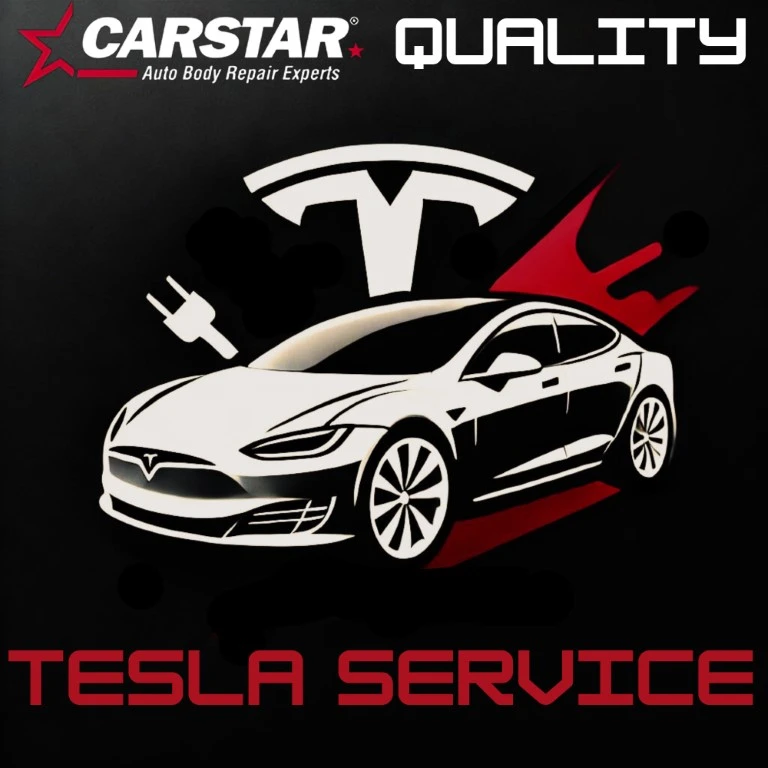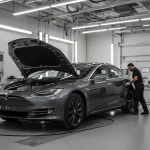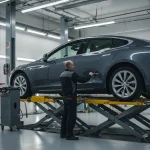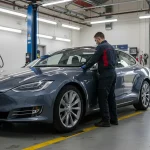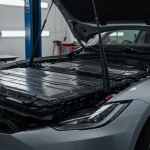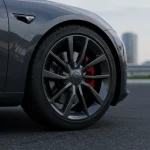Car accidents and collisions, no matter how minor, can be stressful events. Along with sorting out insurance claims and dealing with unexpected downtime, you also want assurance that your vehicle will be restored to its pre-accident condition—or better. Understanding the collision repair process helps you navigate these challenges more confidently. Below, we’ll walk you through each stage of auto body repair, from dent and scratch fixing to working with a reputable auto collision center staffed by certified collision repair technicians in Feasterville-Trevose.
1. Initial Assessment and Insurance Coordination
1.1. Scheduling an Inspection
Your first step usually involves contacting a reliable auto collision center, such as CARSTAR Quality Auto Body and Tesla Service in Trevose, PA. You can arrange an inspection for them to evaluate the damage. During this initial visit, the team will ask questions about the accident, gather information about your car’s make, model, and year, and document the extent of the damage.
1.2. Handling Insurance Details
Once the shop has noted the visible damage, they’ll provide a preliminary estimate that you can forward to your insurance provider. Some collision centers will coordinate directly with insurers, streamlining the paperwork and helping you focus on more pressing matters—like ensuring you have a temporary mode of transportation.
2. Detailed Repair Plan and Cost Estimate
2.1. Comprehensive Diagnosis
Following the initial assessment, the collision repair team crafts a detailed work plan. They may use diagnostic tools, especially for modern vehicles with complex electronic systems. This helps identify any mechanical or electronic components affected by the collision.
2.2. Transparent Pricing
You’ll receive an itemized estimate outlining parts and labor costs. This breakdown typically covers everything from dent and scratch fixing to potential part replacements. If any hidden damage is discovered later, the repair plan will be updated, and you’ll be informed before any additional work starts.
3. Disassembly and Hidden Damage Check
3.1. Panels and Parts Removal
Once you’ve approved the repair plan, technicians will remove damaged body panels, bumpers, and trim to access underlying structures. This phase is crucial for revealing any concealed damage that wasn’t visible during the initial assessment.
3.2. Adjusting the Repair Scope
If new issues come to light—such as compromised frame alignment or internal mechanical problems—the repair plan will be updated. Open communication at this stage ensures you know exactly what needs to be fixed and why.
4. Structural and Mechanical Repairs
4.1. Frame Straightening
For serious collisions, the structural frame might be bent or misaligned. Certified collision repair technicians use specialized equipment to measure and straighten the frame back to factory specifications, ensuring the vehicle’s safety and stability.
4.2. Mechanical Checkups
- Suspension: Technicians examine tie rods, ball joints, and other suspension components for signs of damage.
- Brakes: Collision impacts can loosen brake lines or cause additional wear on pads and rotors.
- Electronics: Sensors, wiring harnesses, and onboard computers may require re-calibration to function properly.
5. Dent and Scratch Fixing
5.1. Paintless Dent Repair (PDR)
For minor dings where the paint remains intact, paintless dent repair may be an option. Technicians use specialized tools to massage the metal back into its original shape—often saving time and money.
5.2. Traditional Repair Methods
If the dents or scratches are extensive, fillers and paint might be necessary. Here’s how it typically works:
- Filler Application: Technicians fill in larger dents with a body filler that’s sanded down for smoothness.
- Priming: A primer is applied to ensure the paint adheres correctly.
- Painting and Blending: Color-matching technology helps technicians match your car’s paint precisely.
- Clear Coat: A final clear coat adds shine and durability.
6. Reassembly and Final Inspection
6.1. Putting It All Back Together
Once the body and mechanical repairs are complete, the collision center reassembles panels, bumpers, and trim. New or repaired parts are aligned to factory standards so that your vehicle’s doors, hood, and trunk close evenly and securely.
6.2. Quality Assurance Checks
Before you pick up your car, certified collision repair technicians conduct a thorough review, checking:
- Paint quality and consistency
- Alignment of panels and doors
- Any electronic or mechanical components repaired during the process
- Overall safety features, such as airbags and sensors
If everything meets the necessary standards, the vehicle is cleared for final handover.
7. Working With Certified Collision Repair Technicians
Choosing a certified repair team makes a significant difference. Technicians with certification from manufacturers or industry associations have undergone rigorous training, use advanced equipment, and follow strict guidelines to ensure your vehicle is restored to the highest possible standard. This often results in:
- Faster turnaround times
- Accuracy in repairs
- Extended warranties or guarantees on workmanship
8. Handover and Post-Repair Care
8.1. Final Walkthrough
When you arrive to pick up your vehicle, the collision repair shop will typically provide a final walkthrough of the completed work. This is your chance to ask any lingering questions or confirm details like paint match and panel alignment.
8.2. Maintenance Tips
- Washing and Waxing: Ask how soon you can wash or wax your car. Fresh paint may need time to cure.
- Follow-Up: Keep in touch with your collision center if you notice any unusual noises, vibrations, or alignment issues.
Why Choose CARSTAR Quality Auto Body and Tesla Service in Trevose, PA
When dealing with collisions in Feasterville-Trevose, CARSTAR Quality Auto Body and Tesla Service stands out as a premier choice. Here’s why:
- Local Expertise: They understand the community’s needs, tailoring solutions for Feasterville-Trevose residents.
- Advanced Methods: From traditional repair strategies to paintless dent removal, they employ state-of-the-art techniques.
- Certified Professionals: You’ll have peace of mind knowing that certified collision repair technicians are handling your vehicle.
Final Thoughts
Navigating the collision repair process can feel daunting, but knowing what to expect helps streamline everything from initial inspections to final handovers. Whether you’re facing major structural damage or need dent and scratch fixing, it’s crucial to choose an auto collision center with a proven track record for quality and reliability. In Feasterville-Trevose, you can count on CARSTAR Quality Auto Body and Tesla Service in Trevose, PA to get you back on the road quickly—and with your vehicle looking and performing at its best. Safe travels!
